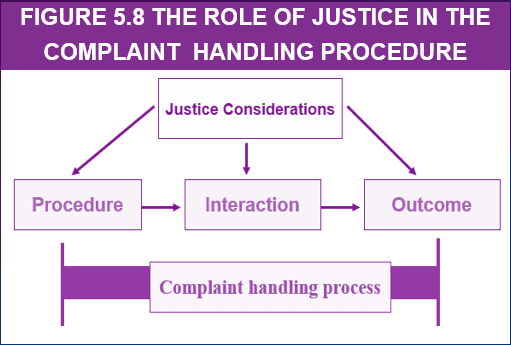Article Overview
In this article we focus on the issue of how to deal with customer complaints effectively and productively, to the end of recovering successfully from situations in which a customer has expressed dissatisfaction with their service encounter or some part of it.
In this way customers, their loyalty and positive word-of-mouth, are retained. Incremental benefits deriving from effective service recovery, and consequential customer satisfaction and retention, lie in increased employee morale, job satisfaction and pride.
The article begins by examining courses of action open to dissatisfied customers, consequences of their dissatisfaction, and sources of dissatisfaction and complaint. We then provide an approach to complaints handling and effective service recovery.
Complaint Handling and Service Recovery
Figure in the highlights the essentials of an effective service recovery system and serves as a guide for the ensuing discussion.
Service recovery
It is the ability to put things right for a customer in a meaningful way when that customer perceives something has gone wrong. It means having a plan for putting things right again when you (inadvertently) break your service promise to a customer.
Principles of Effective Service Recovery
These should be considered at two levels: managerial and procedural. At a managerial level this implies commitment, the inculcation of a complaints response culture, staff training and empowerment, and ownership of the complaint so that someone in the organization acts on behalf of the customer and follows through to see that there is a resolution to the complaint.
The Role of Justice in Complaint Handling Procedures
Figure 5.8 stresses that customers want 3 types of fairness when their complaint is handled. The first- procedural fairness deals with fairness of procedures as the complaint was handled; the second is interactional fairness (how you were treated) and finally is outcome fairness – or get you get a just and fair resolution to the problem.
Discussion Note
It may be worthwhile engaging students in a discussion in which they share experiences of unsatisfactory service, how (if at all) they went about voicing their dissatisfaction, and what they expected and received in return.
Example
Three dimensions of justice affects consumers’ overall satisfaction with service-recovery efforts of the firm following a service failure
Justice (or fairness) has a large impact on how customers evaluate a firm’s recovery efforts. Procedural justice refers to the policies and rules that a consumer goes through to make a complaint. Consumers evaluate the speed and convenience of the process, flexibility, the level of customer control and how the firm follows up after the complaint in judging procedural justice. Interactional justice refers to the behavior of the firm’s representatives during complaint resolution. For this, customers value honesty, politeness, genuine concern, openness and an explanation for the initial failure. Outcome or distributive justice concerns the compensation a customer receives associated with the service failure. Customers expect to be compensated for the inconvenience of the failure, and also for having to go through the recovery process.
(i) Customer Complaints: The Present Situation, including
- Courses of Action Open to a Dissatisfied Customer
- Complaints as Market Research Data
- Factors Influencing Complaining Behaviour in western and Asian cultures
- Standards for Complaints Handling
(ii) Complaint Handling and Service Recovery, including:
- Principles of Effective Service Recovery
- The Impact of Service Recovery Efforts on Customer Loyalty
- Learning from the Service Recovery Experience
EXAMPLES
Differences in the behavior of typical consumers from South-East Asia and Western countries when it comes to (a) complaining; (b) evaluating service-recovery efforts of the firm.
(a) Complaining
Complaint behavior increases when the problem is perceived as being a matter under the control of the firm, and what we learn from the fundamental attribution error (below) is that Western consumers tend to internalize explanations for service failure and therefore are more likely to complain.
(b) Evaluating service recovery efforts
To illustrate, an example from a hotel/resort setting found that South-East Asian consumers were more satisfied with recovery efforts than Australians when:
- they were kept regularly informed of what was being done to solve the problem
- the recovery was initiated by the firm resulting in higher interactional justice
- an apology came from a person of senior status, and.
- an explanation of the cause of the service failure is given.



